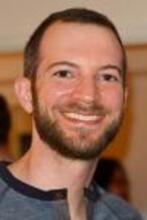Dissertation Defense
Luciano Dyballa
Title: The Manifold of Neural Responses Informs Physiological Circuits in Mouse Visual System
Advisor: Steven Zucker
Other committee members:
Julie Dorsey
Ronald Coifman
Michael Stryker (UCSF)
Abstract:
Inferring the structure and function of neural circuits is central to understanding biological visual systems. Focusing on the visual system of the mouse, we address two major challenges toward this goal. First, we introduce a novel stimulus ensemble. We show that it is rich enough to exercise the visual system broadly but simple enough for analysis. The ensemble includes flow patterns, a class of naturalistic visual stimuli that span spatial frequency, contrast, orientation and directionality, as well as conventional grating stimuli. These flow stimuli are more constrained than natural images but more variable than gratings and noise patterns. A stimulus generator is developed, and it has been deployed in several neuroscience laboratories.
The second challenge is how to infer the functional structure of neural circuits from their activity to the stimulus ensemble. We use machine learning techniques to develop a novel manifold of neurons. This manifold is informative of basic circuit topology as well as neural function. It differs from the standard approach in which trials are embedded in ‘neural coordinates.’ Our manifold, by contrast, embeds neurons in functional coordinates derived from the stimuli. It is defined so that those neurons that are close to one another on the manifold respond similarly in both activity and time to similar features within the stimulus ensemble.
Preliminary experiments with mouse retina and visual cortex data reveal examples of these different manifold structures and provide a foundation for understanding the computational transition between retina and cortex in awake, behaving mice. The same algorithm can be applied to artificial neural networks as well; interestingly, deep CNNs yield manifolds that are disconnected like the retina, not continuous like V1. For neuroscience, this could explain the apparent ceiling in modeling cortical data; the limitations of categorical tasks; and suggests future modeling directions. More generally, it illuminates limitations on the categorization problem, and underlines the importance of recurrence in networks for more complex tasks.
